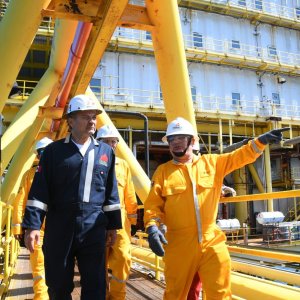How to Evaluate Supplier Sustainability

STORY INLINE POST
It all starts from corporate and the request to “measure suppliers’ CO2 emissions.” This is becoming a strategic imperative throughout organizations, derived from the pressure to account for Scope 3 emissions metrics, which is a growing concern for companies beginning to explore alternatives that support their corporate sustainability goals. This four-word request coming from corporate may seem simple but, in reality, it entails complexity of reporting, a lack of standardization, transparency and for many, confusion.
Scope 1 and 2 are easier to target, especially because the information is more attainable and controllable. These are emissions coming from internal sources and energy procurement. These are also the most popular metrics required by third parties, especially investors and key stakeholders. But many companies are beginning to embrace the Scope 3 journey, which includes any activities or assets that are not controlled or owned by an organization. Suppliers in the value chain are the core and most complex portion of this section.
In Mexico, most companies carrying out this activity are foreign entities that have extended the request to all their subsidiaries. The initial challenge lies within the internal and external communications. First, it is common that corporations fail to clearly explain what they need, what is accepted and how it needs to be requested, reviewed, questioned and, ultimately, reported. Things get lost in translation and because not everything is applicable to every market, confusion sets in and challenges the team’s ability to comply.
Second, due to a lack of full understanding and at the same time a desire to carry out the project, the local team tends to send out a generic survey to be filled out by suppliers. It is important to note that suppliers may receive numerous surveys or formats that request similar or different items from their customers. These formats are designed in a generic way to make them applicable to all types of suppliers. The problem is that sustainability actions and solutions are implemented in different ways, depending on the industry and type of operations. For example, a financial consultant cannot carry out the same type of strategies as a manufacturer. A carmaker may have suppliers in the plastic, packaging, steel, and textile industries. Each has its own KPIs and action-driven strategies to decarbonize operations on a Scope 1, 2 and 3 bases, which eventually sums up the carbon footprint of the end product.
Third, when a supplier receives this vague format, confusion extends to their organization, and now the carmaker may have hundreds of perplexed suppliers uncertain as to what is expected of them. As a supplier, how do you interpret your sustainability projects and metrics? Which ones are important to whom? How do you disclose information and how reliable is the information to be shared with your main clients? Will disclosure put you at risk? Could an audit of your disclosed activity affect your business relationship? These are items that should be questioned internally and early on. However, what if the company still hasn’t begun on a sustainability journey? There are many companies for which sustainability has not been a priority. Unfortunately, in countries like Mexico, strategies take a long time to be implemented, mainly due to permitting delays. For these, the risk is clear and, therefore, uncertainty could impact the business relationship in a negative way. The supplier must understand any consequences linked to performance.
Joining your suppliers on this journey is a good investment of time and resources. Diligently explaining information, sharing ideas, experiences and technology will support their efforts. Discussing their status, short-, medium-, and long-term strategies is also a good way to engage and influence their actions. From another perspective, it is crucial for them to understand how they should report their advances. From what kind of KPIs are applicable to them to what explanation needs to be shared. You should ensure metrics are attainable, transparent, and replicable month-by-month or on a yearly basis. Establishing whether the supplier must meet a certain goal is very important. Communicating with them in a timely manner is as well. Some suppliers are requested to comply with a certain percentage of reduction of their carbon footprint in relation to the volume that the client represents, while other clients request from suppliers their global or even local status in terms of their CO2 emissions.
Once suppliers deliver their reports, companies must audit their results. For example, how are they managing waste? Are they using renewable energy? Do they own on-site generation? What type of materials are they using? Are they assessing travel by car, plane, etc.? How are they transporting products? For each, the methodology utilized to quantify this information should be questioned. It is important to understand the projects, innovations, processes, and investment that companies are making on this front as well as the timeline(s) for implementation. It is critical to understand that as clients request these reports, we must trust the information presented. These results will add up and contribute to the carbon footprint that your product(s) represent and which will be reported to consumers, investors, financial institutions and NGOs. This process takes time and should be supported by an independent third-party expert when possible.
Organizations have different criteria and are working toward diverse goals; therefore, communication between clients and their suppliers is key to successfully carrying out this process. All parties involved must understand the purpose and share the commitment. Consultants are valuable facilitators for strategy, implementation and reporting guidelines that can drive positive change through the process. It is imperative to educate suppliers and engage in the journey of sustainability together.
























